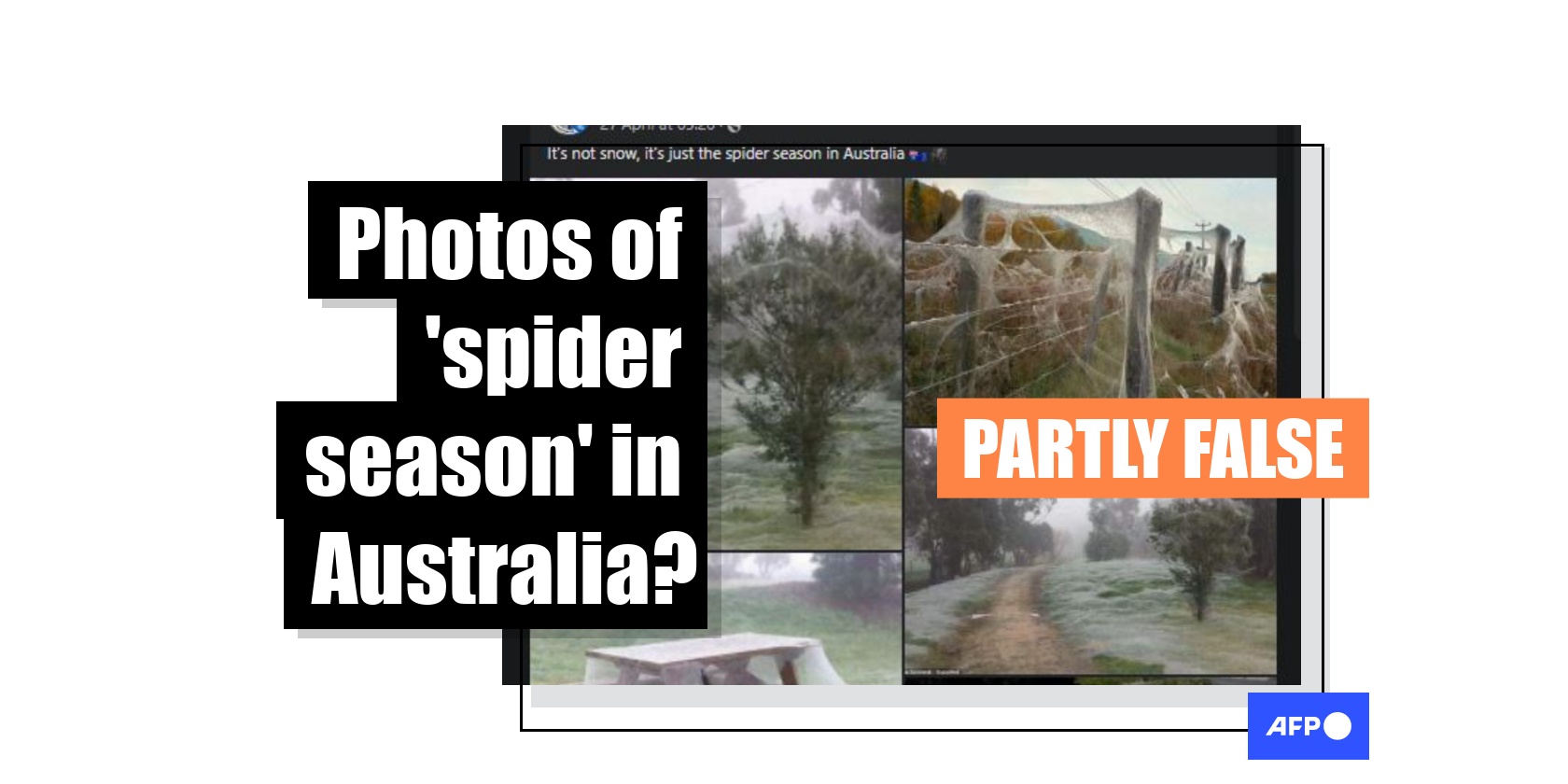
Images show spiderwebs around the world, not all found in Australia
- This article is more than three years old.
- Published on April 29, 2022 at 14:40
- 3 min read
- By Segun OLAKOYENIKAN, AFP Nigeria
The photos were published in a Facebook post on April 27, 2022. More than 3,700 people have shared the post, which is accompanied by ten images showing trees, fields, and a picnic table covered by thick layers of spiderwebs.
“It's not snow, it's just the spider season in Australia,” the caption reads.
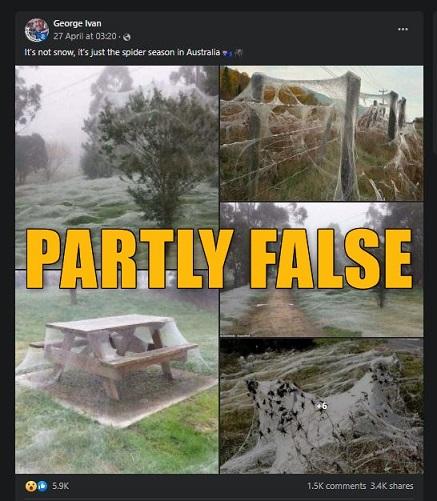
The same set of pictures has been shared in different blogs and other social media posts, all referring to Australia.
But in reality, only some of the images were taken in Australia while others are unrelated to the country.
Images from outside Australia
AFP Fact Check ran a reverse image search on the first picture and found that the image shows Lake Tawakoni in the US state of Texas. It was taken on August 15, 2007, by Donna Garde, the superintendent of Lake Tawakoni State Park in Texas.

Similarly, we traced another image showing a giant web with two uniformed men in the background to the same Lake Tawakoni State Park. The picture by photographer Tom Pennington was taken on August 29, 2007, and uploaded to Getty Images.
“Lake Tawokoni State Park rangers Mike McCord, left, and Freddie Gowinn continue to monitor a giant communal spider web at the park Tuesday, August 29, 2007 in Wills Point, Texas,” the caption reads.

A search for an image showing two trees next to a river found that it was cropped from a larger version that appeared on the National Geographic website in March 2011. It was taken by Russell Watkins, an aid worker with the UK Department for International Development.
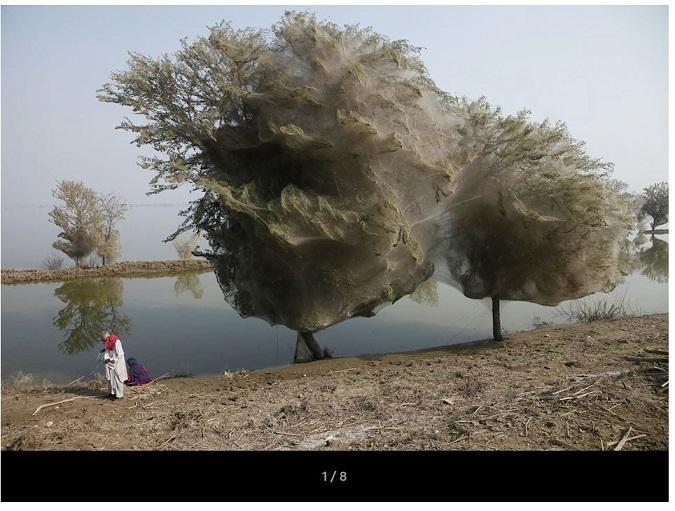
The incident occurred in 2010 when massive floods in the Pakistani province of Sindh drove millions of spiders and possibly other insects into the trees to escape the rising floodwaters, leaving the trees covered with silk, according to National Geographic.
As for the image of cobwebs along a fence, we traced it to a stock photo site, where it is credited to a Canadian photographer, but with no mention of the photograph's location. We have reached out to the photographer for comment and will update if we receive a reply.
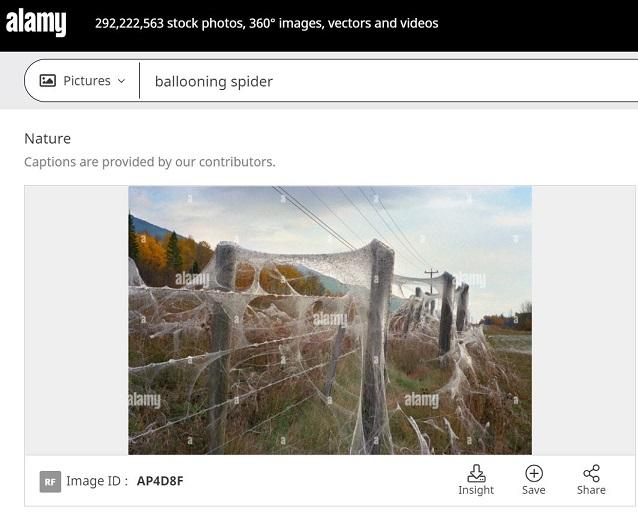
Images from Australia
The remaining pictures are from Australia, as claimed in the Facebook post.
An image of cobwebs covering an field with a truck in the background was featured in a 2015 report by Australian online platform news.com.au about the country’s mysterious “spider rain”.
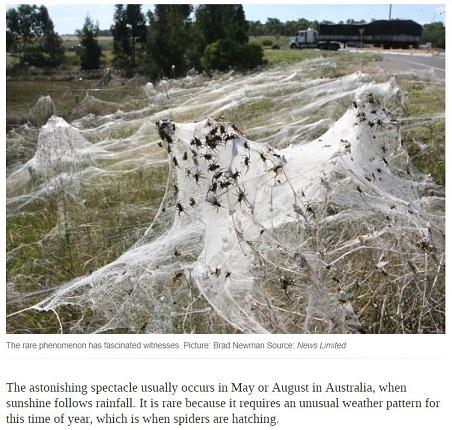
Four images taken by Leslie Schmidt in Australia were published on the website of British newspaper Daily Mail. Schmidt told the newspaper that she took the images on July 10, 2016, while playing Pokémon Go in Yinnar, in Australia's Victoria state.
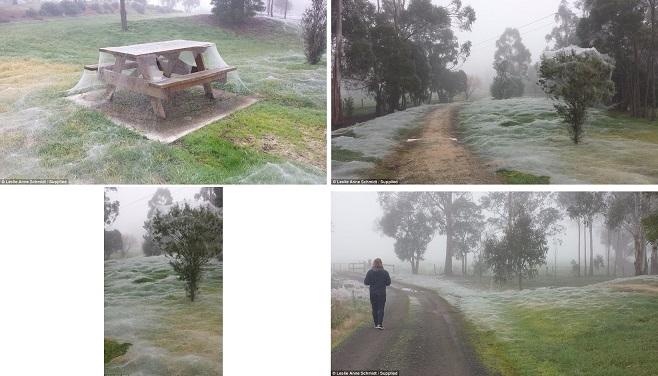
During periods of high rainfall or flooding, spiders often seek higher ground and can travel across entire oceans using a method called ballooning. The phenomenon has been witnessed multiple times in Australia, as reported by National Geographic in 2015 and 2012.
Copyright © AFP 2017-2025. Any commercial use of this content requires a subscription. Click here to find out more.
Is there content that you would like AFP to fact-check? Get in touch.
Contact us
